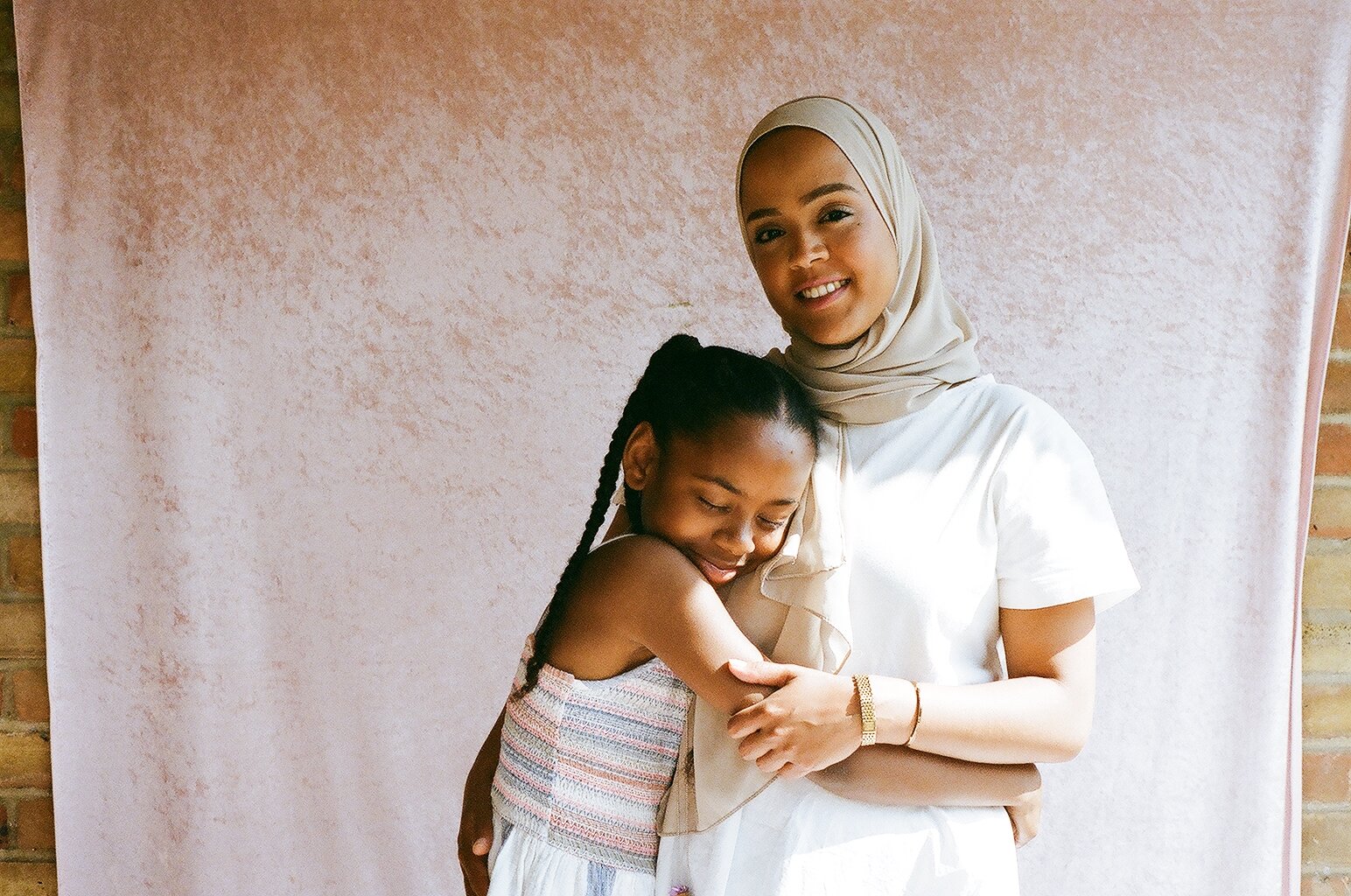Sana Badri
Words by Pelumi Odubanjo
It takes a certain responsiveness to impart affection through the camera lens. To do so, it means creating an image, moment, and space where for a split second, time is disfigured, bent, and moulded to the camera’s will.
This is what Sana Badri, the young British-Tunisian artist does through her photographic practice. Badri, who hails from East London, is a documentary image-maker. Her camera acts as the human eye as it follows, traces, and narrates the city which exists around her, never skipping a beat in telling this story of love for a community and its people.
London is a city all about the people and Badri celebrates this. One of the most striking things about her photographs is the intimacy they convey: she documents everyday people being themselves, proudly and comfortably – and the effect is profoundly moving. Many of her subjects appear unaware of the lens being directed upon them. The London Market images are no exception: two older men, captured greeting one another in a jovial, familiar manner as their arms meet at a market stall; a young child adorned in a tiger mask steps into a beauty shop, staring back at the camera as the sign ‘NAILS, BEAUTY, HAIR salon’ hangs above the figure; two hands clasp one another, one overlaying the other with the flash of a watch uncovered by the camera’s angle beneath the denim, and the other, resting below, supported by the subject’s knee clasped in comfort as the hands delicately pose for the camera; and a woman, wearing an all-black niqab as she walks before a shuttered shop, engrossed by the bold pink exterior which above reads ‘100s Sweets’. On the left-hand side of this particular image, we see a figure as they descend beyond the frame, blue hoodie, two shopping bags, into the distance. The use of analogue throughout the series creates a sense of nostalgia as Badri breathes new meaning into each fleeting moment. Ultimately, Badri’s practice is an archival practice, acting as a living document for East London’s diverse communities and its inhabitants.
Badri’s series, Mothers and Daughter’s, takes a slight diversion from the public space. The work, much like the title infers, documents the relationships between mothers and daughters, and thus channels ideas of culture and matrilineage through the posed, studio-type aesthetics and personable style. Echoing the classical and somewhat historical format of a family photograph, Badri places women as the subjects and controllers of the gaze. The images are rich in intimacy. In one, we see a young girl with braided hair holding the older woman, arms draped around her mother as she gleefully leans into her chest, eyes closed, burying herself within her mother as if she is a pillow. The mother looks at the camera, and ultimately at Badri, as a smile stretches across her face. The sunlight gleams through the left of the image, bouncing between herself and her daughter, illuminating them as they become embellished by the beams, slowly becoming one with the peach-like backdrop. This aesthetic is repeated throughout the series, as Badri creates camouflaged snapshots where mother and daughter become one with the backdrop but never lost. Instead, we bear witness to an image where interior and exterior are merged as one, and transmission is breathed through every direction of the photograph. In many ways, Badri is allowing the contrast of old and new to serve as a metaphor for the ever-changing face of one’s community, creating images that don’t quietly document its subjects from a place of distance but instead echoes their stories, allowing them to reverberate through the lens, feeding into an anticolonialist rebelliousness and difference.
The Britain we see today is a place set against decades of austerity, the chaos of Brexit, and the tragedy of the Grenfell Tower fire in North Kensington. Historically working-class neighbourhoods continue to be enveloped by new developers and luxury tower blocks, with multi-million-pound penthouses replacing local businesses, pushing up the area’s already incredulous rents, and rapidly reshaping the local demographic. Badri’s photographs not only document a community and their survival against such forces. They echo stories of many diasporas and tell a story of how communities and the people that form such spaces connect, thrive, and create life - defying the view that metropoles swallow up these ways of life, the relationships, and the stories within them.
Badri’s work is a timely multigenerational and multicultural love letter to lineage and community, and in such, she challenges and disrupts presumed social uses of photography. Badri is not simply an onlooker into these ways of British life. Her lens is fascinated by its people, finding beauty in the grittiest of places and creating dream-like images, shining a powerful light on the lives of ordinary people. Seeing moments that others may pass, they become both an object of Badri – and her camera’s – affection.




